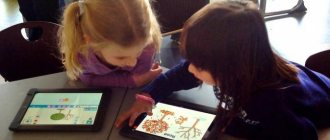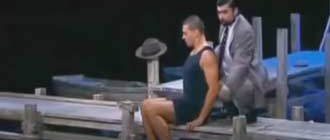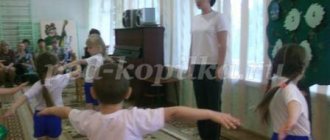On the topic: methodological developments, presentations and notes
Presentation on the world around us. Introducing children to fruit and berry trees.
Presentation on the surrounding world to familiarize children with fruit bushes.
The abstract is intended for children 2 ml. speech development groups.
Problem:Children of primary preschool age do not have sufficient understanding of plants, where they grow, the necessary conditions for their growth, and their interest in cognitive and research.
The script is recommended for young and older children.
Project objectives:1. Develop a positive attitude towards work.2. Learn to carry out individual and collective assignments.3. To consolidate children's knowledge about the structure of the bulb and the conditions necessary for growth.
Source
Preview:
Summary of OOD on cognitive development in the middle group
Game - journey "Miracle - vegetable garden"
— clarify and consolidate children’s knowledge about vegetables growing in the garden, their features and appearance;
— expand children’s active vocabulary, consolidate the ability to coordinate nouns and adjectives in gender, number, and case;
— broaden children’s horizons by telling them interesting, previously unknown facts about vegetables.
Fresh vegetables, a “Vegetable Garden” model, a toy hare, a tape recorder.
- Guys, you probably noticed that today we have an unusual guest in our group - Bunny. He watched you and saw what good and friendly guys you were and decided to invite you to his garden. Do you want to visit Bunny? How will we get there? (children's assumptions).
— Do you want to go on a trip on a steam locomotive? I will be the locomotive, and you will be the carriages (we are building as a “locomotive”). Is everyone ready? Then let's go! Too-too! Chug-chug-chug! (To the song “The locomotive is coming, the locomotive is coming”, music by G. Ernesaks, lyrics by V. Tatarinova, we move through the group).
“I can already see Zaykin’s garden.” Here we are.
— Guys, look what’s growing in this garden bed? (onion). That's right, how did you guess? (children describe the characteristic features of the appearance of the onion).
- What will happen to those who cut onions? That's right, their tears will flow. And why? (children's assumptions).
Tears flow because small arrows fly out of the onion. They are so small that you and I cannot even see them, but we will feel them - our eyes will sting. But if in the path of these arrows there are microbes that make us sick, then these microbes will disappear. Therefore, those who eat onions get sick less. What can we cook with onions? (children's answers)
- Let's move on to the next bed. You all know this bright vegetable. That's right, it's a carrot. What is she like? (children's answers). What dish can you add carrots to?
- Guys, do you know that carrots were not always so bright and thick. A long time ago, so many years ago that you can’t even count, carrots were white and very, very thin, like a rat’s tail. But gradually she put useful substances into her spine, like into a piggy bank. And over time it became as red and thick as it is now. The carrots turned red because they had added carotene. This is the substance that colors carrots orange. When you eat it, inside you, in your body, carotene turns into vitamin A. This is a growth vitamin. Children, calves, chickens need it - everyone who needs to grow. And to grow healthy, we need movement, in addition to vitamins. Let's move around a little and warm up.
We'll go to the garden (they walk in place)
Whatever doesn’t grow there (they spread their arms to the sides).
We will pick cucumbers from the garden (they pick imaginary cucumbers).
Tomatoes with smooth skin (show the silhouette of a ball with your hands).
A thick turnip is firmly planted in the ground (slightly rock the body from side to side, placing your hands on your belt).
Long carrot (lower your arms down and join your palms at the bottom).
She cleverly hid from us (they crouch and cover their heads with their hands).
Pull, pull from the ground (they stand up and make movements as if they were pulling a carrot from the ground).
Everything has been collected - look! (spread their arms to the sides).
- Let's see what grows in the next bed (potatoes). What is he like?
_ Potatoes ripen in the fall, but can be eaten all year round if stored in a cool place. What can you cook from potatoes? (children's answers)
— The Indians were the first to try potatoes. And they liked him so much that they began to organize holidays in his honor, dressing up large tubers like dolls, sewing skirts for them from multi-colored scraps. Now potatoes are eaten all over the world.
- Here's another vegetable. What is this? (tomato). What is he like? A
You know that first people called it “tomato”, and only then “tomato”. What happened? Does the same vegetable have two names? "Tomato" is translated as "golden apple". After all, tomatoes used to be yellow, small, like small apples. And they were planted not for eating, but for beauty. What can you cook from tomatoes? (children's answers).
- So we looked at all the vegetables in the beds. Thank you, Bunny, for the invitation to your wonderful garden. It's time for us to return. Let's say goodbye to the Bunny. We get on our locomotive, it will take us to the group. (The song “The locomotive is coming, going” sounds, music by G. Ernesaks, lyrics by V. Tatarinova, we move through the group).
— Guys, did you like our trip? What vegetables did you see in the garden beds? What do you remember?
On the topic: methodological developments, presentations and notes
consolidate children's knowledge about seasonal changes in nature; form ideas about forest plants: mushrooms and berries.
Summary of educational activities for introducing the natural world in the middle group “Spring is red.”
Abstract of the educational activity for familiarization with the natural world in the middle group “Explorers of the Arctic and Antarctic.” Author: Koryakina Tatyana Aleksandrovna, teacher of the preschool educational institution Kindergarten No. 9 KV, Bogoroditsk.
Goal: to form children’s ideas about legumes (beans, peas), Tasks: to develop practical skills in sowing seeds, creating the necessary conditions for their growth (soil, moisture, light, heat.
developing children's ideas about reptiles.
Source





